Abstract
1. Lymph flow, blood flow and lymph protein concentrations have been measured in cat hind limb.
2. When naturally occurring pharmacologically active compounds were infused close arterially to the hind limb it was found that histamine, bradykinin and acetylcholine were the most potent in increasing lymph flow.
3. Dilatation of blood vessels per se is not sufficient to cause an increase in lymph flow since potent vasodilator agents such as isoprenaline and prostaglandins were not very active in increasing lymph flow.
4. The effect on blood flow was rapid in onset and in return to basal flow, whereas the effect on lymph flow was delayed and prolonged. The duration of the effect on lymph flow was considerably greater with histamine and bradykinin than with acetylcholine.
5. An increase in the protein concentration in the interstitial fluid is not a pre-requisite of an increase in lymph flow because (a) in some experiments an increase in lymph flow was not accompanied by an increase in lymph protein concentration after infusion of vasoactive substance and (b) the glucofuranoside, Glyvenol, was found to inhibit the increase in protein concentration but not the increase in lymph flow caused by infusion of histamine or bradykinin.
6. In contrast the specific antihistamine, mepyramine, abolished the effect of histamine on lymph flow and lymph protein concentration and considerably reduced the effect on blood flow.
7. An increase in venous pressure alone caused a small increase of lymph flow in about 50% of experiments, but when the venous pressure was increased at a time when vascular permeability was high, there was an increase in lymph flow in all experiments.
8. When the venous pressure was low only histamine caused a significant increase in the lymph protein concentration, whereas bradykinin sometimes caused a small increase and acetylcholine mostly caused a decrease in the concentration of lymph protein.
9. When the venous pressure was high, bradykinin and histamine and occasionally acetylcholine caused an increase in protein concentration in the lymph.
10. Infusions of histamine, bradykinin or prostaglandin E1 did not increase the leakage of intracellular enzymes into the lymph.
Full text
PDF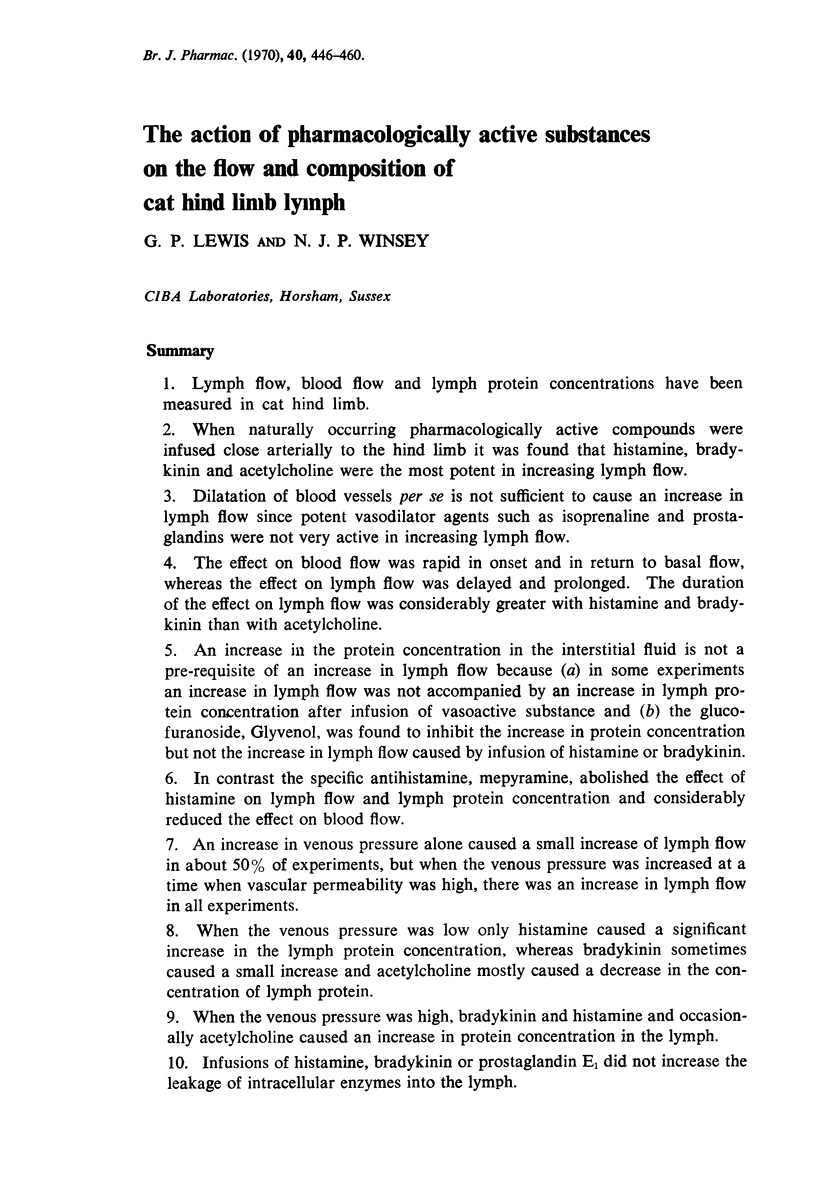
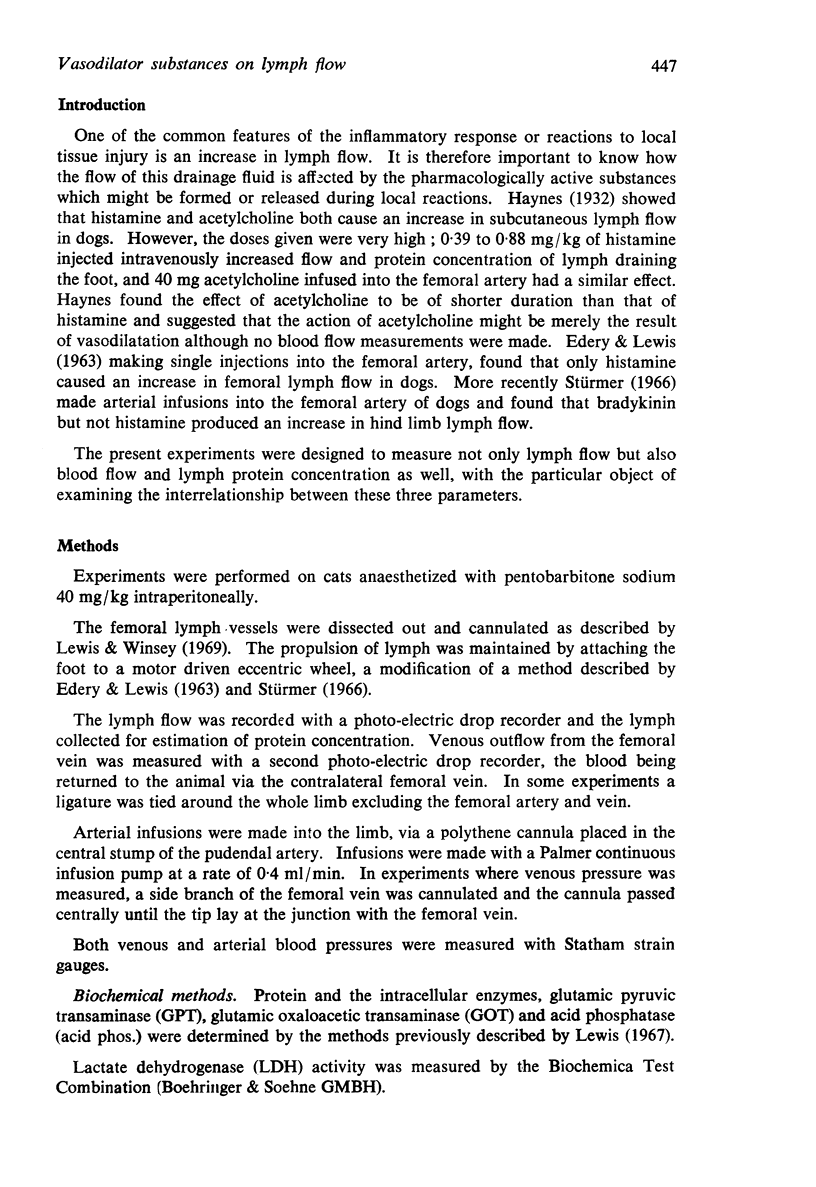
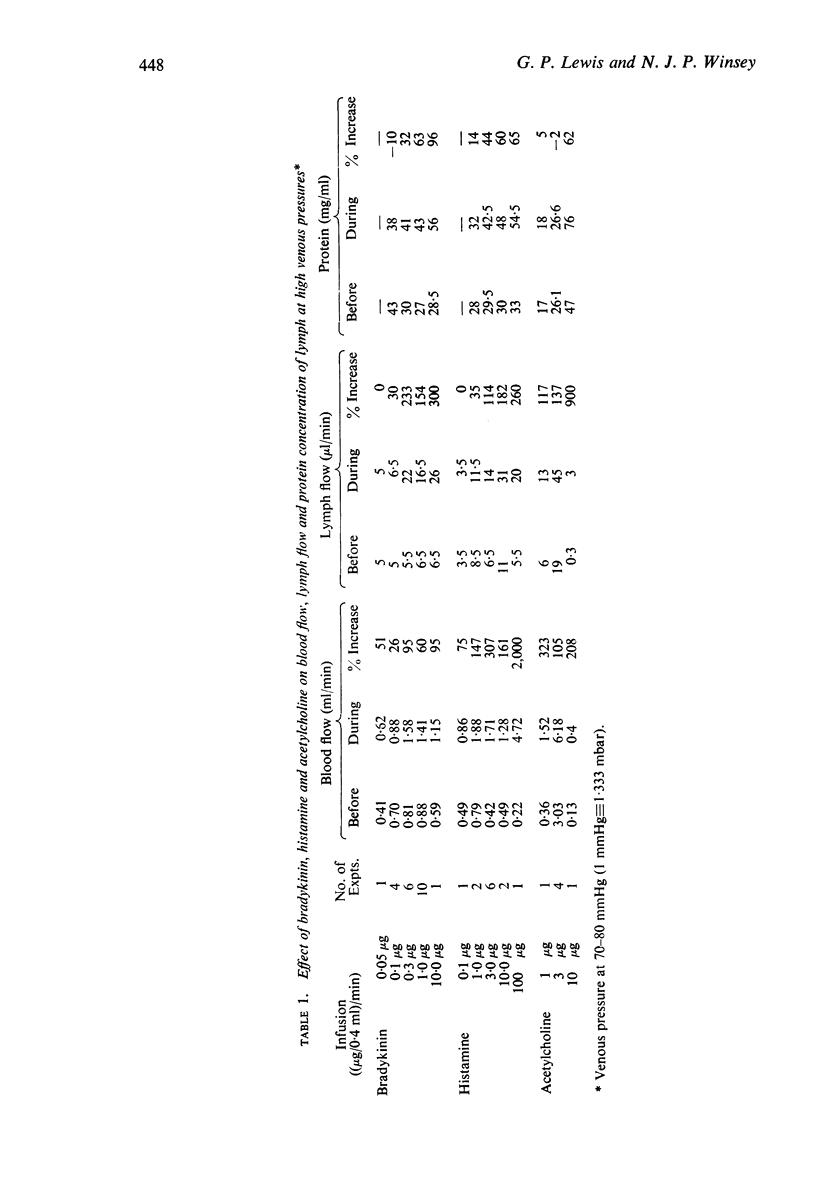
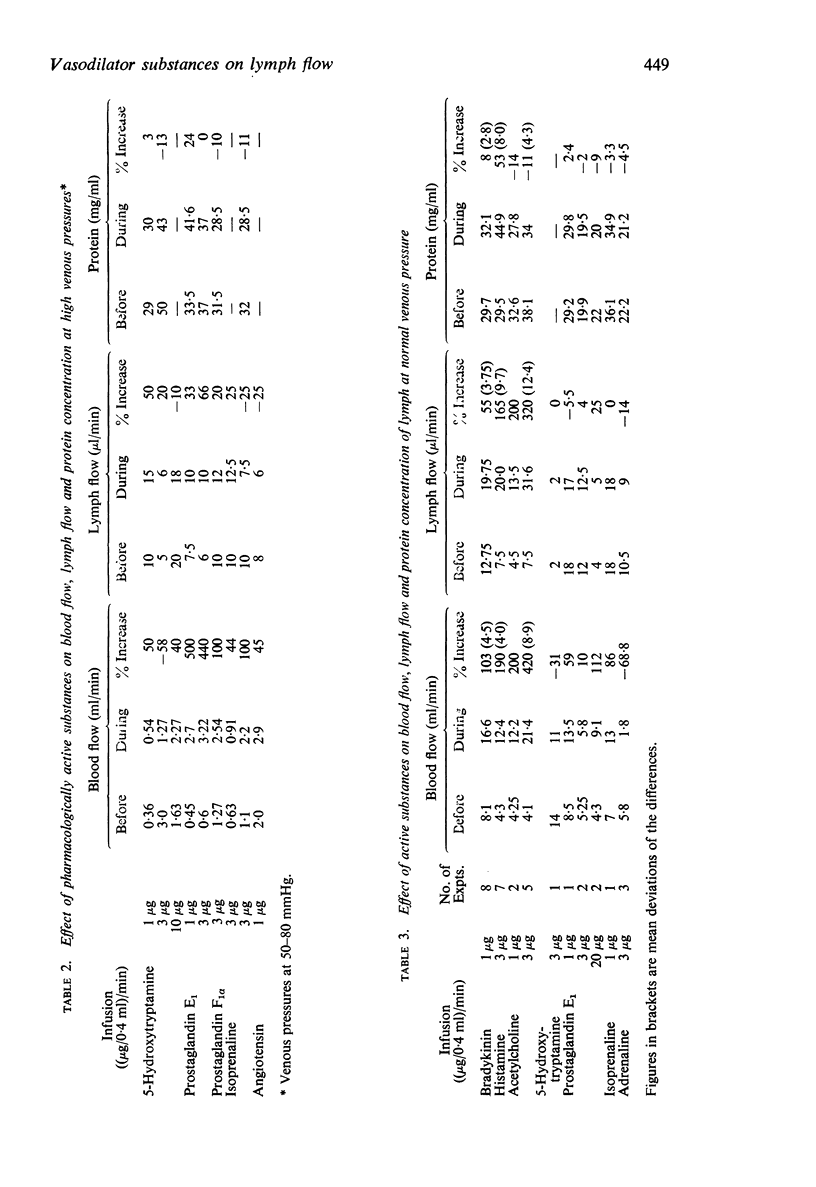
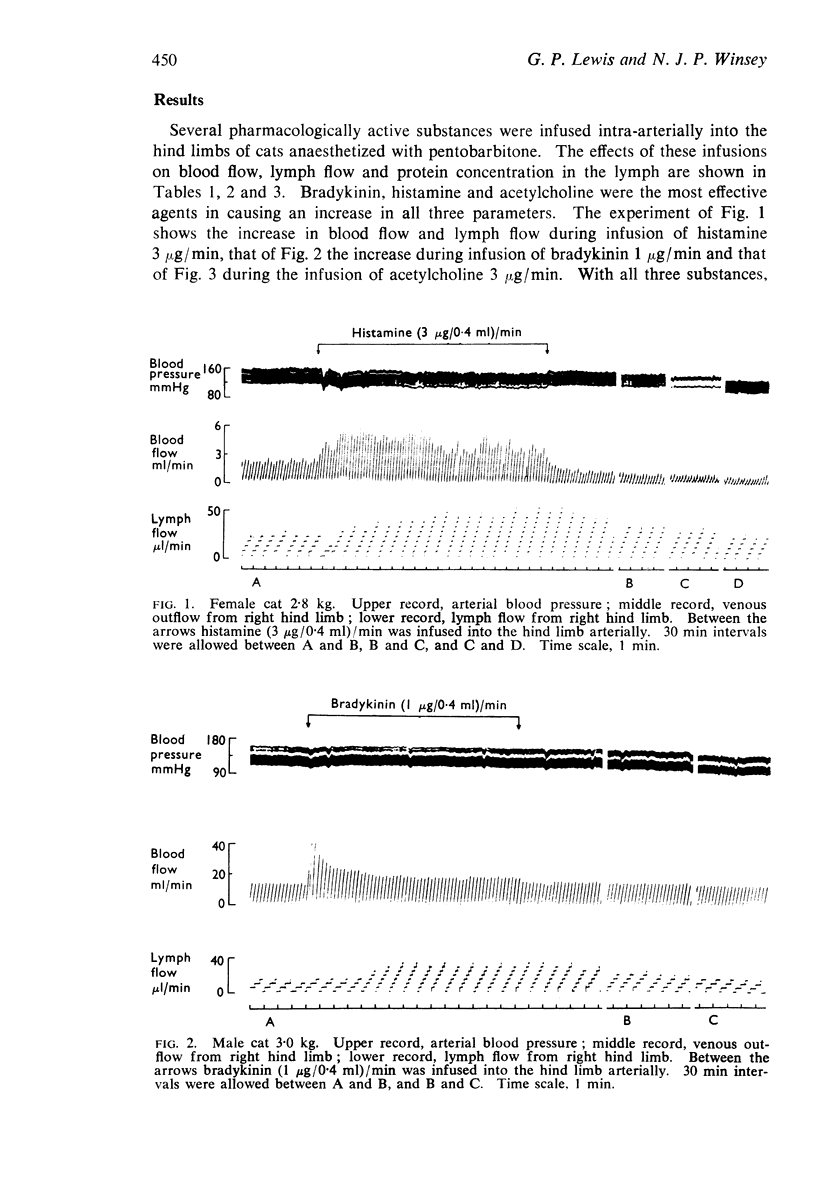
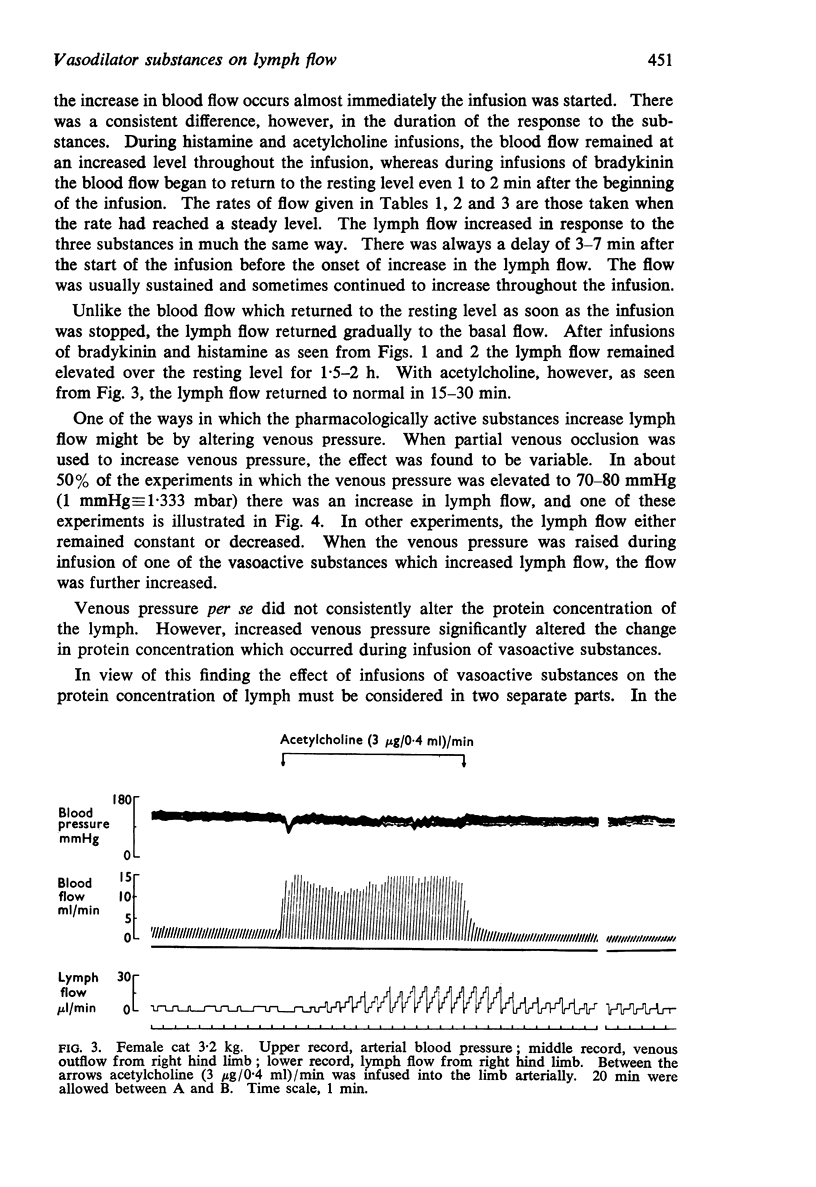
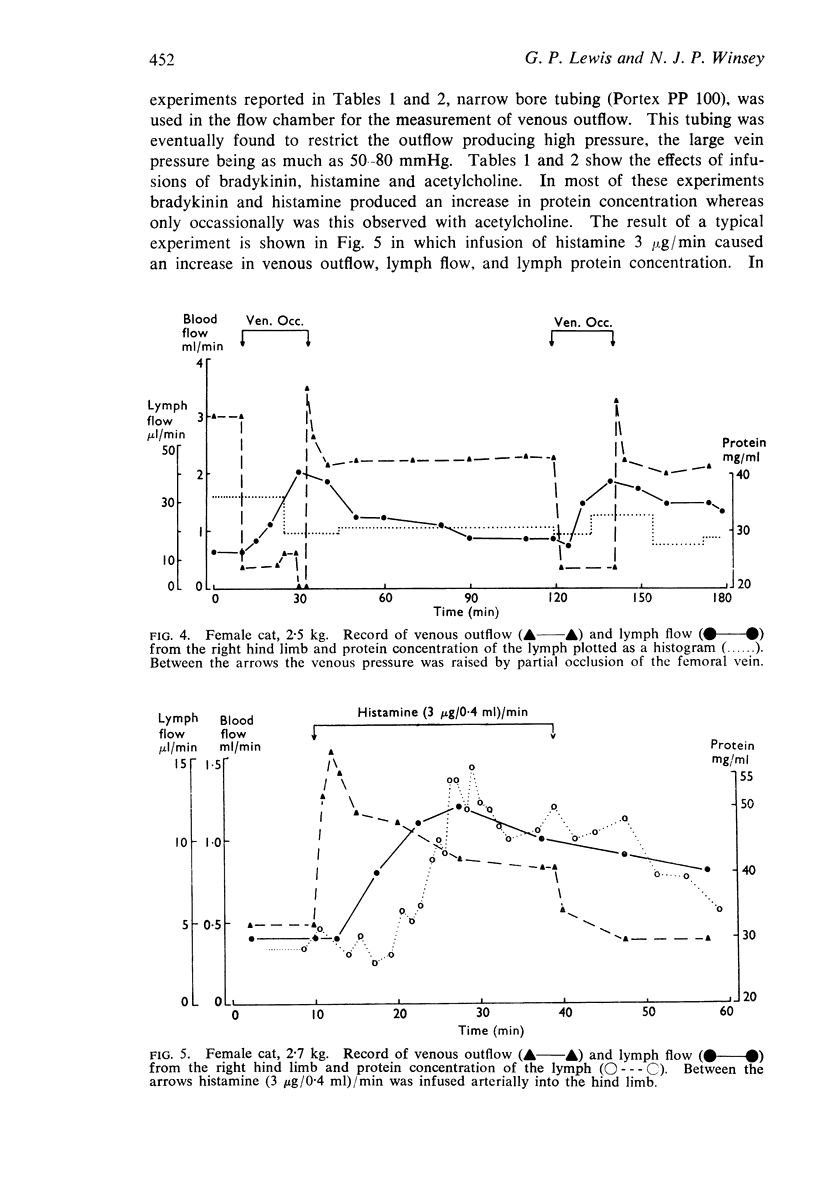
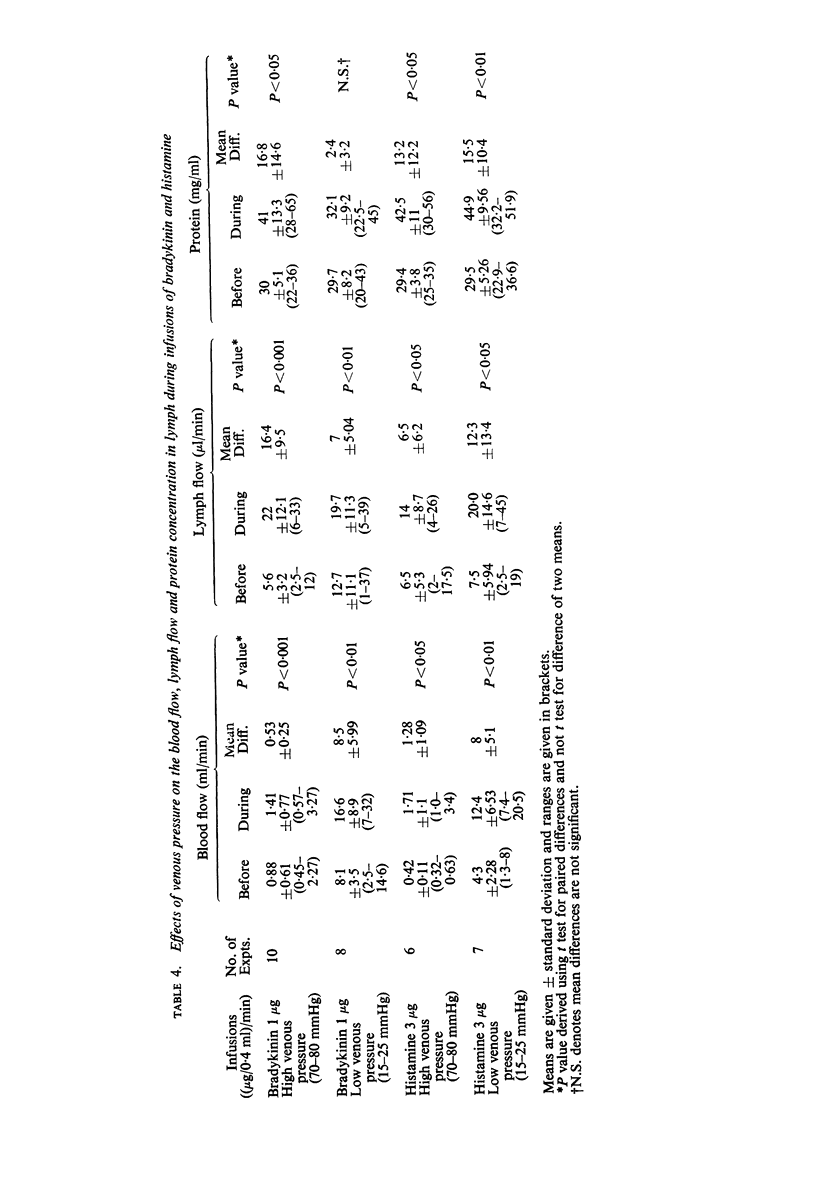
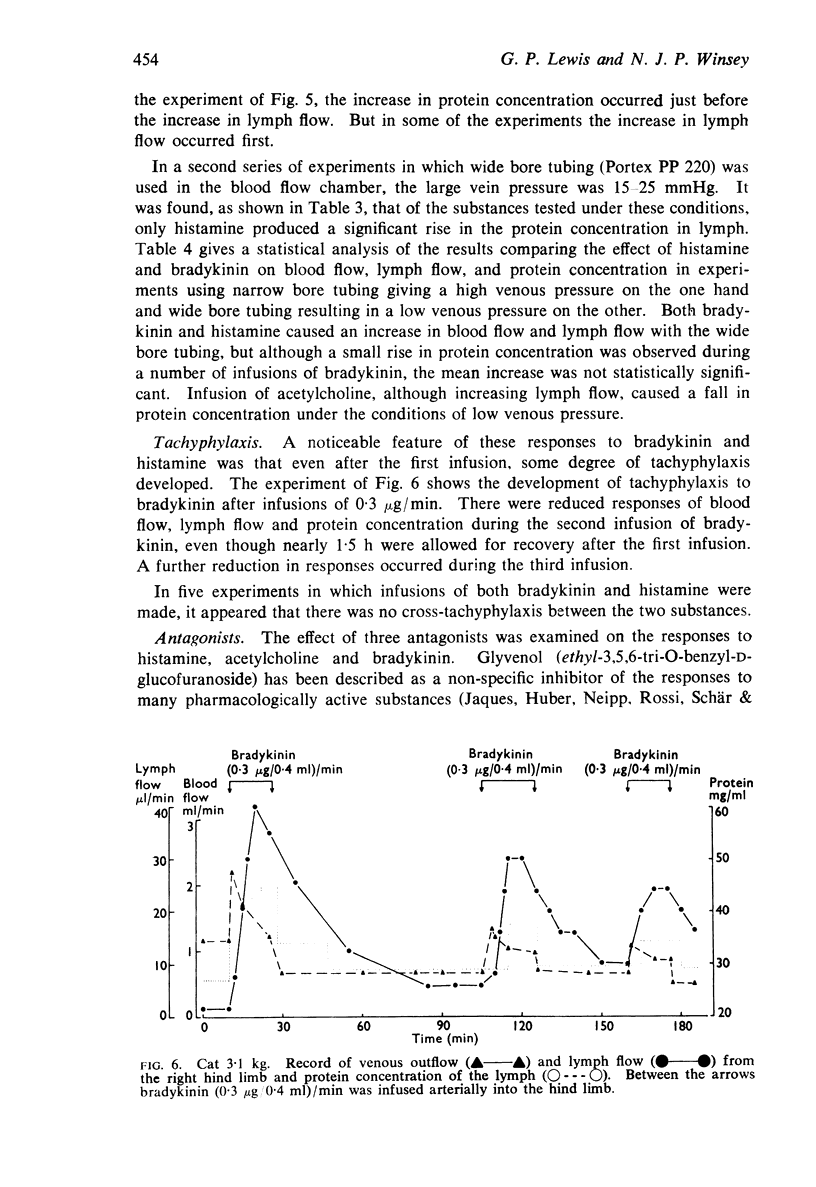
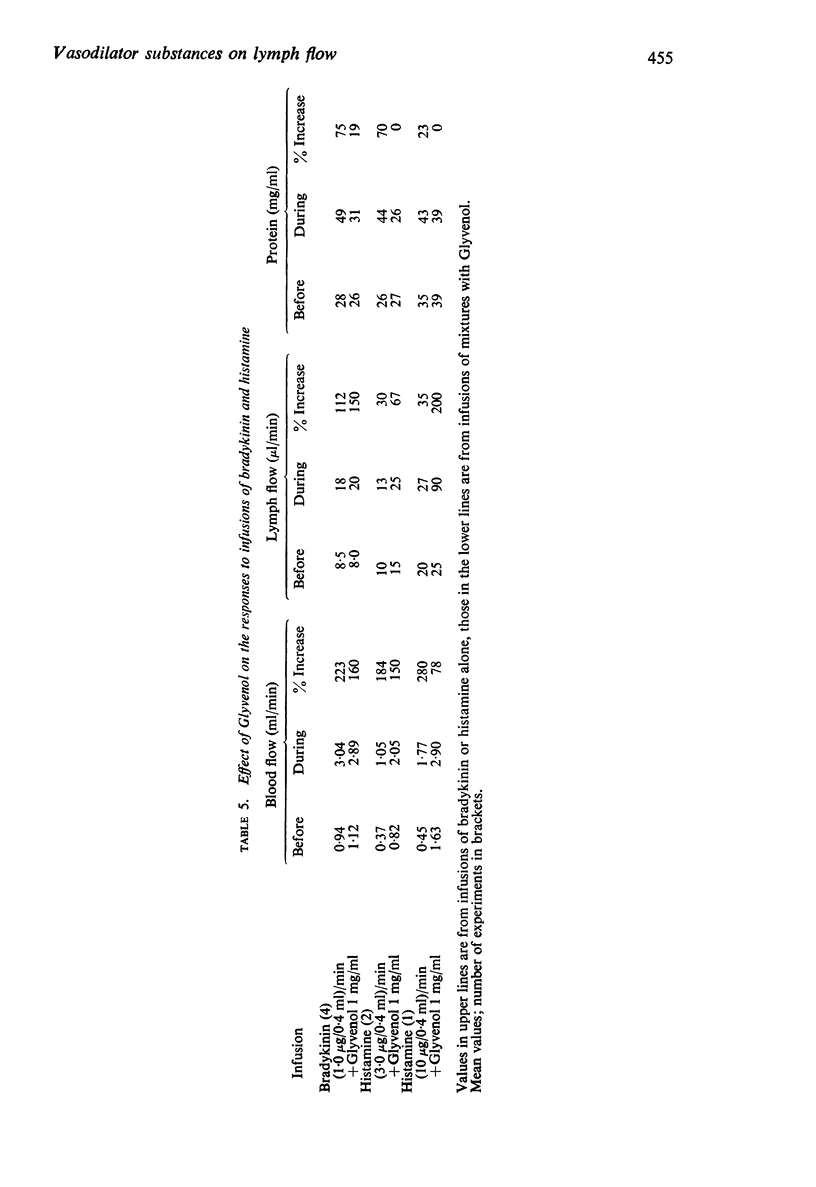
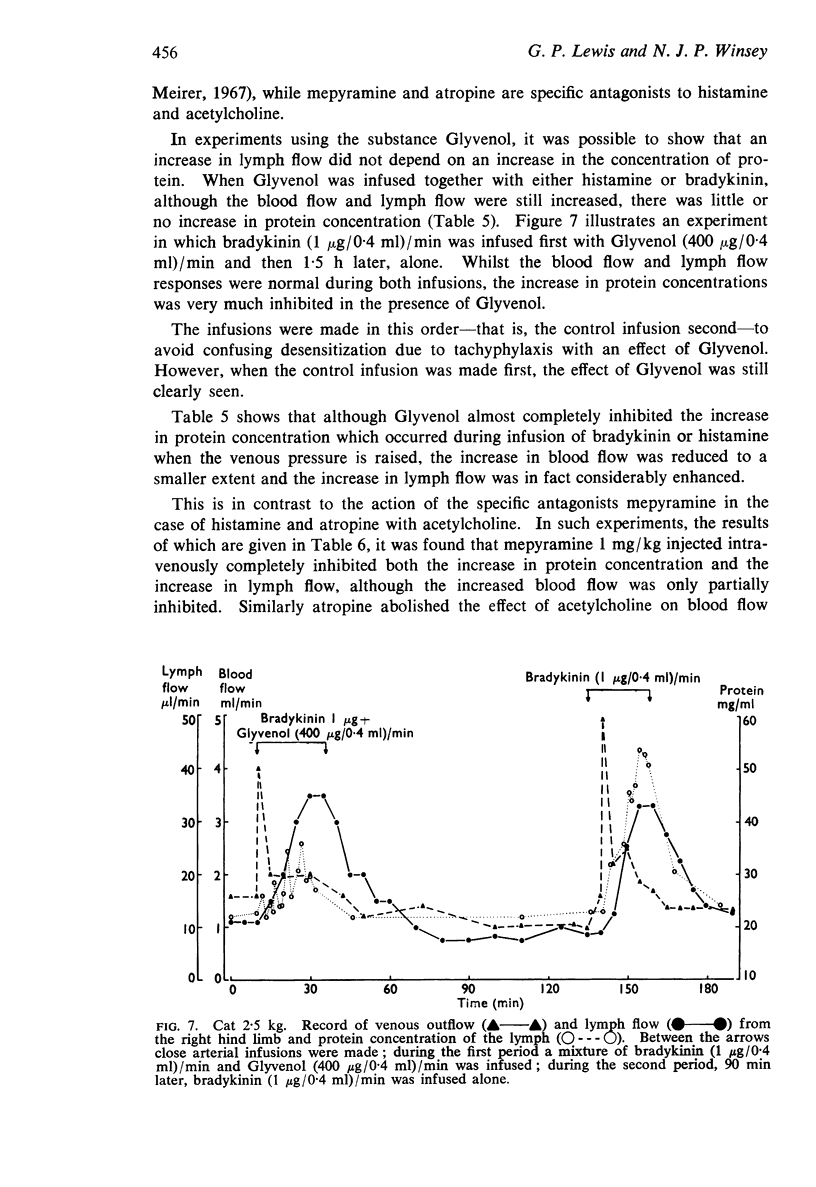

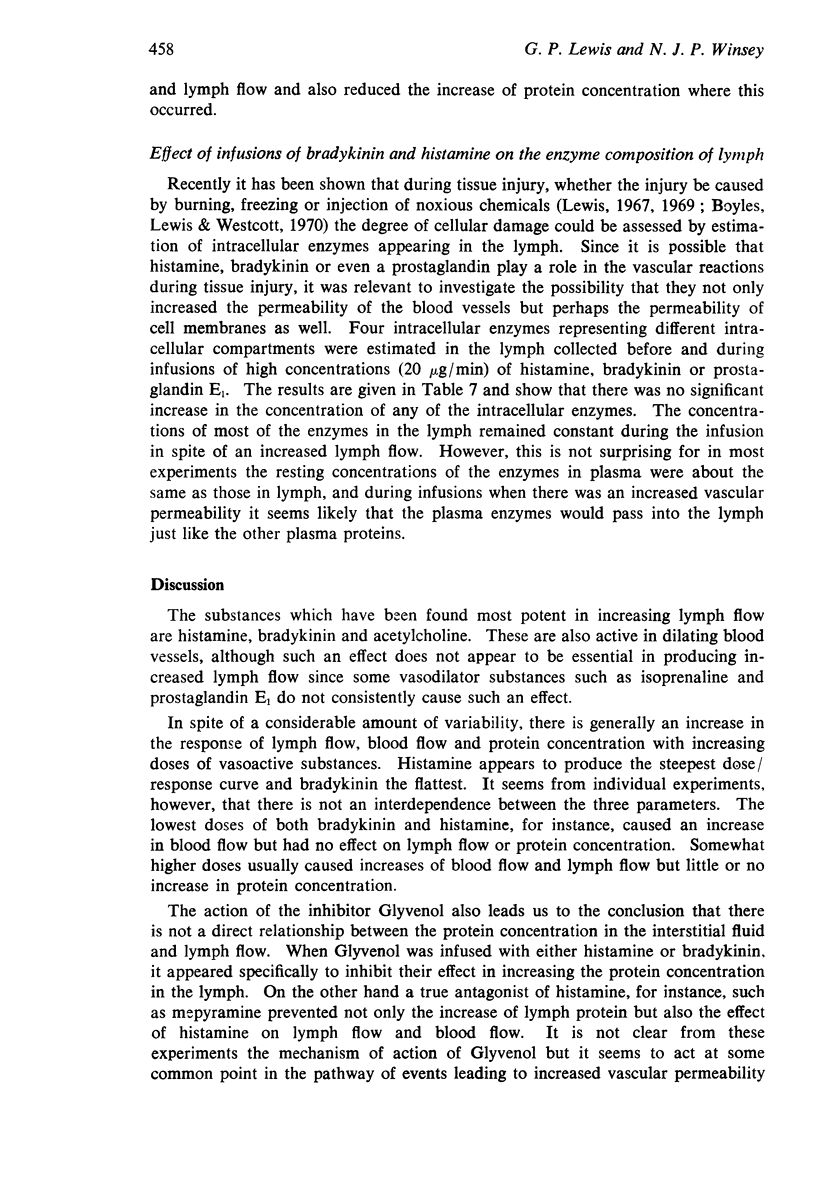
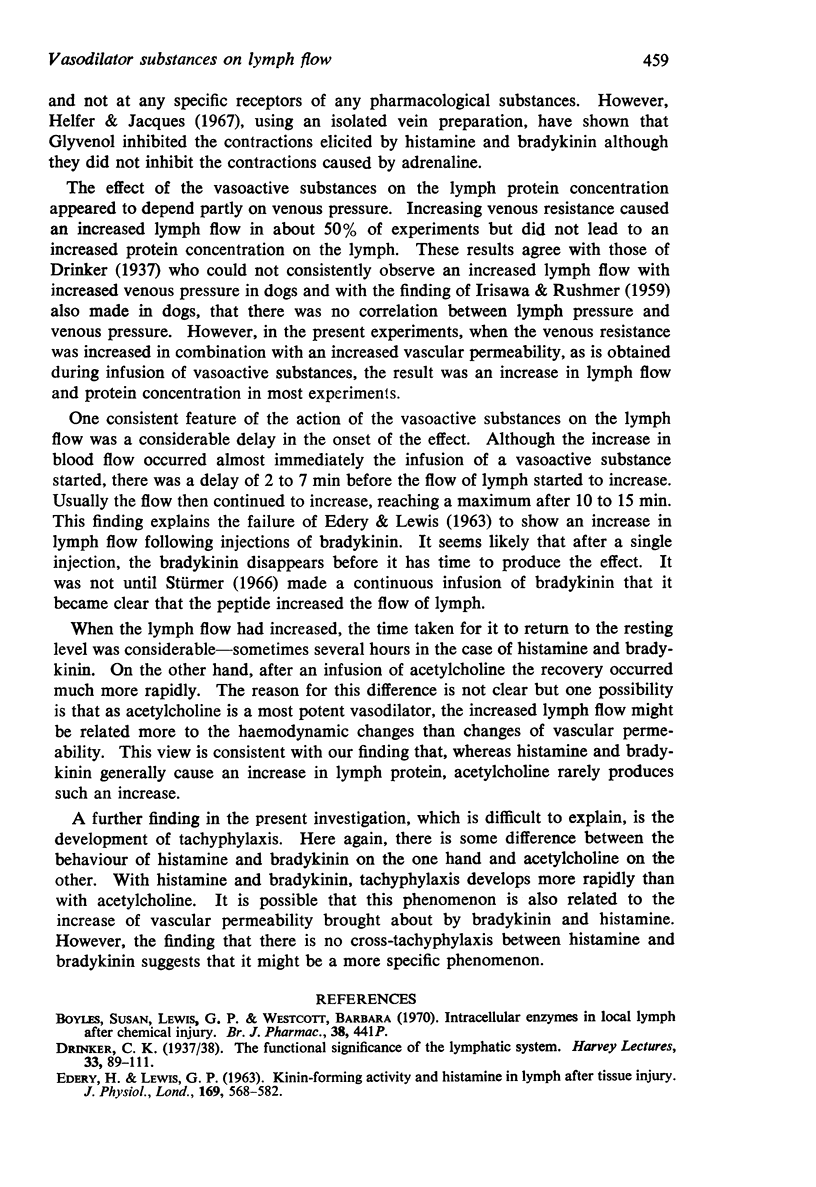
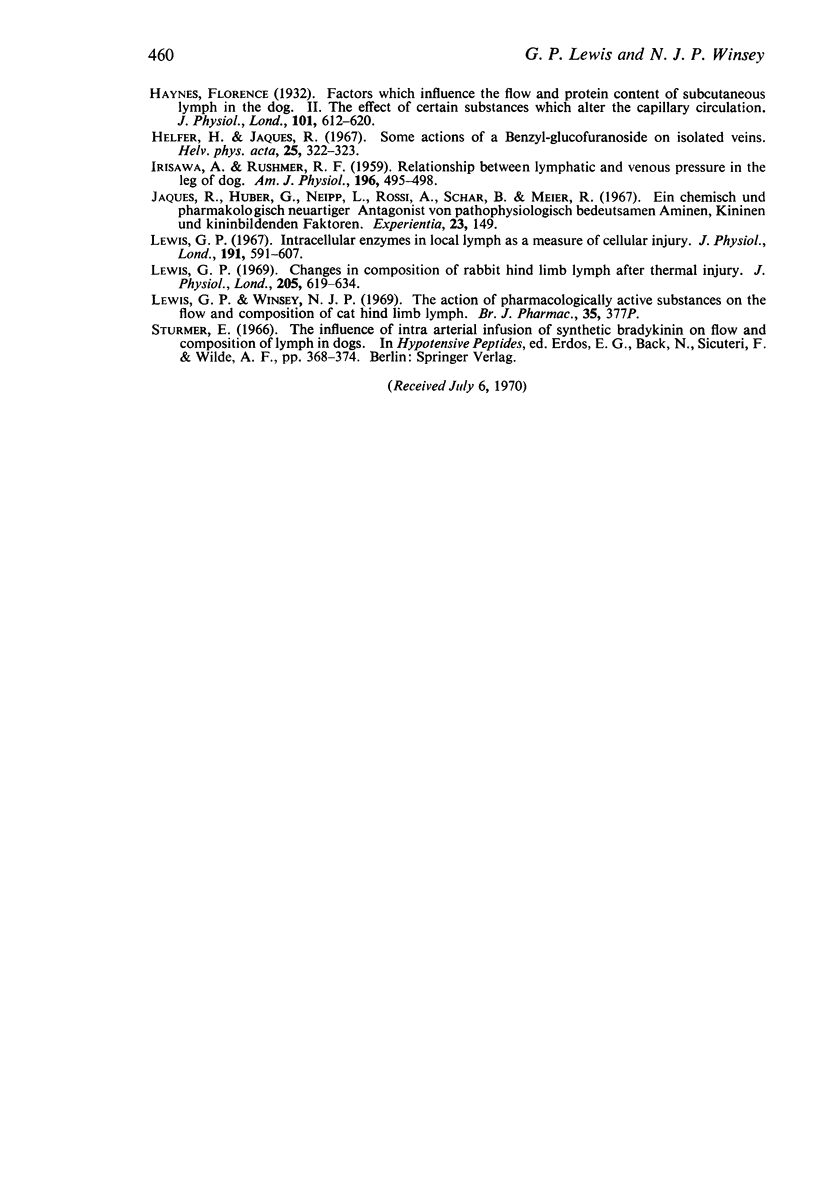
Selected References
These references are in PubMed. This may not be the complete list of references from this article.
- Boyles S., Lewis G. P., Westcott B. Intracellular enzymes in local lymph after chemical injury. Br J Pharmacol. 1970 Feb;38(2):441P–442P. [PMC free article] [PubMed] [Google Scholar]
- EDERY H., LEWIS G. P. KININ-FORMING ACTIVITY AND HISTAMINE IN LYMPH AFTER TISSUE INJURY. J Physiol. 1963 Dec;169:568–583. doi: 10.1113/jphysiol.1963.sp007280. [DOI] [PMC free article] [PubMed] [Google Scholar]
- Helfer H., Jaques R. Short communication: some actions of a benzyl-glucofuranoside on isolated veins. Helv Physiol Pharmacol Acta. 1967;25(3):322–323. [PubMed] [Google Scholar]
- IRISAWA A., RUSHMER R. F. Relationship between lymphatic and venous pressure in leg of dog. Am J Physiol. 1959 Mar;196(3):495–498. doi: 10.1152/ajplegacy.1959.196.3.495. [DOI] [PubMed] [Google Scholar]
- Jaques R., Huber G., Neipp L., Rossi A., Schär B., Meier R. Ein chemsich und pharmakologisch neuartiger Antagonist von pathophysiologisch bedeutsamen Aminen, Kininen und kininbildenden Faktoren. Experientia. 1967 Feb 15;23(2):149–150. doi: 10.1007/BF02135975. [DOI] [PubMed] [Google Scholar]
- Lewis G. P. Changes in the composition of rabbit hind limb lymph after thermal injury. J Physiol. 1969 Dec;205(3):619–634. doi: 10.1113/jphysiol.1969.sp008986. [DOI] [PMC free article] [PubMed] [Google Scholar]
- Lewis G. P. Intracellular enzymes in local lymph as a measure of cellular injury. J Physiol. 1967 Aug;191(3):591–607. [PMC free article] [PubMed] [Google Scholar]


